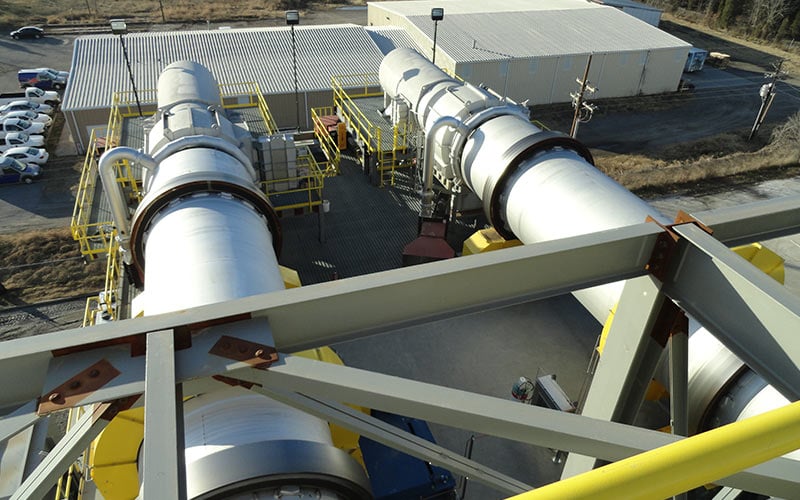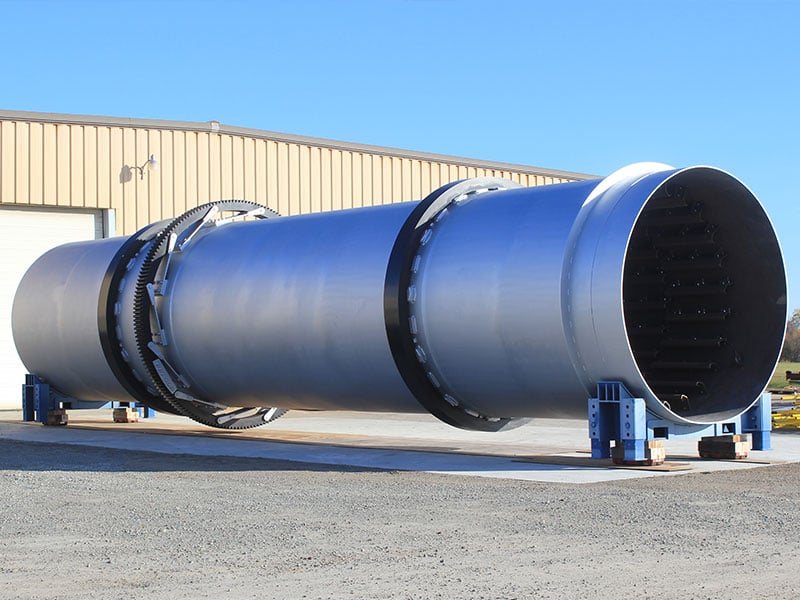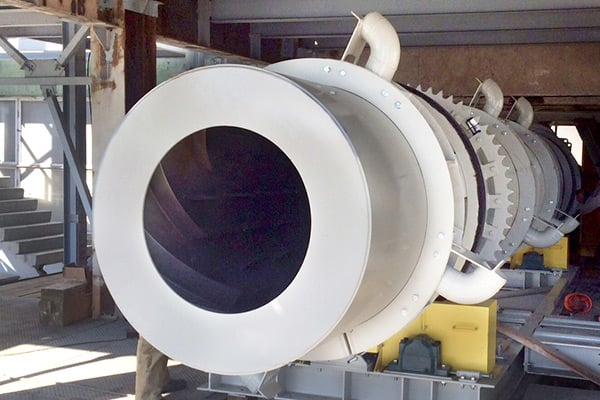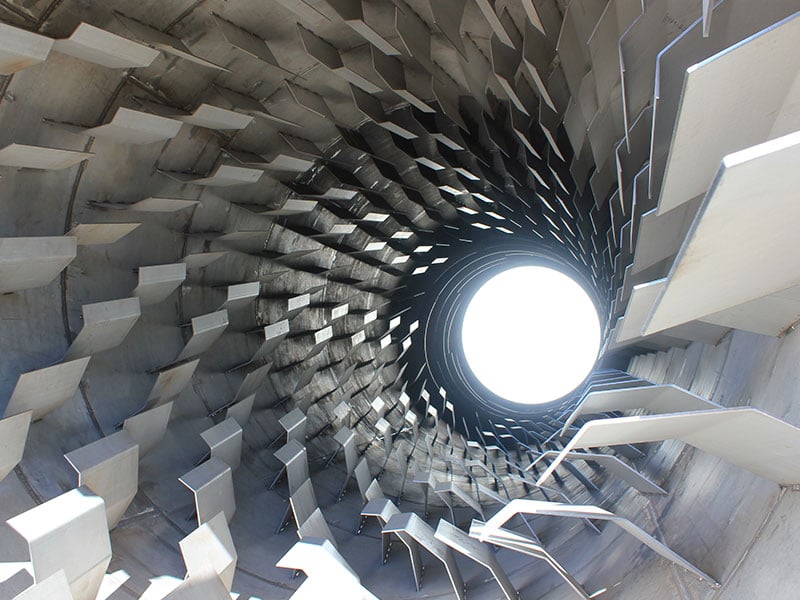The roofing granule industry is projected to grow in tandem with demand for asphalt shingles in the coming years as consumers face an increase in extreme weather events, more stringent regulations, and aging homes.
As a result of the aggressive nature of the materials being processed, combined with the extreme capacities so characteristic of the industry, the roofing granule industry is one of the most demanding industries when it comes to production equipment, requiring a level of robustness beyond that of almost any other industry. For this reason, producers rely on rotary drums to carry out roofing granule production.
Roofing Granule Production Process Overview
The roofing granule production process, as well as how rotary drums are involved, is summarized here.
Roofing granule production begins at the mine site, where mined and sized rock granules meeting a number of industry-specific requirements must be dried prior to processing in the coloring plant or production facility. Drying is carried out using a rotary drum dryer.
Once dried, the rock is heated in a rotary drum at the coloring plant to prepare it for color coating. Rock granules exiting the pre-heating drum are fed to a coating or coloring drum, in which they are tumbled with a pigment and any other desired additives.
The now color-coated granules are then fed to a rotary kiln, where the pigmented coating is cured onto the granules. Since the rotary kiln utilizes high temperatures to cure the coating, granules exiting the kiln are hot and must be cooled prior to storage or further handling.
The cooling step, which also helps to prevent material from sticking together during storage, is carried out in a rotary cooler. Granules exiting the cooler are ready for storage or shipment.

Simplified flow diagram of the roofing granule production process
Why Rotary Drums Prevail in Roofing Granule Production
The rotary drum serves as the basis of the entire roofing granule production line. Whether it be a dryer, pre-heater, cooler, kiln, or coloring drum, the rotary drum boasts a number of qualities that have made it the industry’s equipment of choice:
1. High Capacity
Rotary drums are capable of processing extremely high tonnages – up to 300 TPH in a single unit depending on the task at hand. This is ideal for processing roofing granules, which are produced at some of the highest capacities of any industry – up to 1500 TPD at a single site in many cases. Rotary drums offer high-capacity processing at every step of the production process.

FEECO Rotary Dryer prepared for shipment
2. Durable
The characteristics that roofing granules are chosen for also make them hard on equipment. Rotary drums are extremely rugged machines and as such, are the standard for industries processing aggressive materials such as minerals, aggregates, and fertilizers. Light-duty equipment, or even medium-duty would not be sufficient for the rigors of processing roofing granules.
In addition to their generally robust build, rotary drums offer plenty of opportunity for increasing their durability through heavy-duty mechanical components, materials of construction, wear liners, and reinforced areas.

Rotary kilns at production plant
3. Long Production Life
The robust build of the rotary drum, combined with its simple mechanics, typically allows for decades of reliable processing when properly maintained.
This long-term reliability is a perfect fit for the roofing granule industry and other well-established industries expected to maintain a healthy market for the foreseeable future.

Rotary cooler prepared for shipment
4. Simple Operation
Rotary drums are a widely accepted technology used throughout a number of different industries, in part, because they are simple to operate. This translates into easy operator adoption and minimal supervision and operator interference.

Coating drum with ball-and-tube knockers
5. Acceptance of Variation in Feedstock
While rock mined for roofing granules is carefully selected and sized, some variation among feedstock is possible, particularly at the mined site when rock must be dried.
Where other types of equipment such as fluid bed dryers flounder, rotary drum dryers are well known for their ability to tolerate variation in feedstock, minimizing unnecessary downtime and clean-outs.

Rotary kiln shell
6. Tumbling Action
As a rotating drum, all rotary drums, whatever configuration, impart a tumbling and rolling action on the bed of material. This tumbling action is beneficial in each step of the roofing granule production line; during drying and cooling, the tumbling motion promotes a polishing of granules. In coating, tumbling evenly distributes the coating throughout the bed of material, encouraging maximum product quality.

Interior view of a rotary cooler with flights
Conclusion
The production of roofing granules is a demanding task, mandating high-capacity equipment capable of withstanding the rigors of processing roofing granules and providing long-term reliability. For these reasons, the industry relies on rotary drums to carry out granule production, as these machines boast a heavy-duty build, high-capacity processing, and decades of reliability, among other benefits.
FEECO is the leading supplier of rotary drums to roofing granule producers, offering the industry’s best rock dryers, pre-heaters, coloring drums, curing kilns, and coolers. All FEECO rotary drums are built to the highest quality standards for long-term, dependable production, and are backed by our extensive parts and service support. For more information on our custom rotary drums, contact us today!



